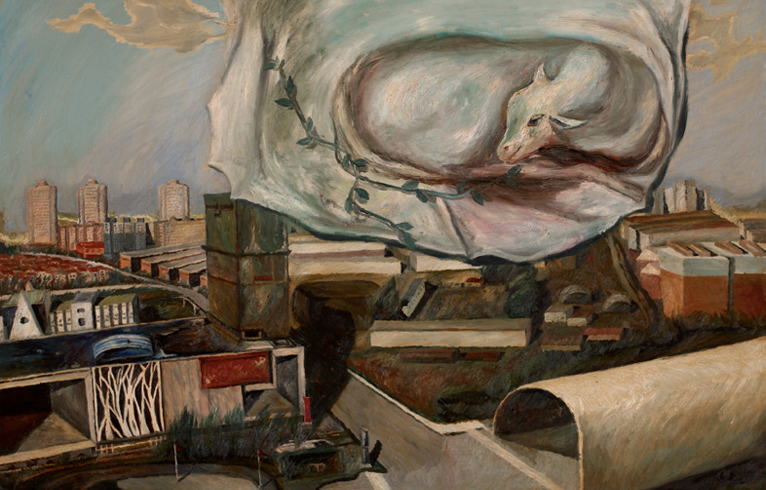HUANG LIANG: PAINTINGS BEYOND YES AND NO
| February 22, 2012 | Post In LEAP 12

Up until now, Huang Liang’s paintings have been dominated by narratives of illness, or more specifically, that of his own bout with a misdiagnosed case of lung cancer. Suffering from respiratory ailments, his doctor’s faulty diagnosis landed Huang in two years of treatment, a time when he says he lost all hope and lived in a painful limbo. Even after he had re-obtained a clean bill of health, the experience haunted Huang, and he explored it in a 2009 solo show at Platform China titled “Settle the Life.” The exhibition’s oil paintings were obsessed with his years of treatment, depicting hospital equipment, x-rays of his lungs, and other scenes of medical treatment.
Two years later, Huang is finally freed, mentally and physically, from the specter of imminent death. His latest show, “Paintings Beyond Yes and No,” also at Platform China, favors classical iconography over the signs of disease: one painting, Female Portrait, for example, is a pale and dour side-portrait of a ponytailed woman wearing a black, vaguely Victorian coat, while Red Lining Cloth, Blue Lining Cloth is an El Greco-esque study in color and drapery. Other paintings seem to take up the cold, rationalist project of the 1980s left behind by groups like the Northern Artists Group, as in Transformation of Hunnan II. By and large, the subjects of his paintings are stationary objects, like mirrors, hourglasses, and drapery, or formalist portraits of ghost-like women, and Huang wields his paint with a sense of material density, painting in thick strokes of unadulterated color.
Although Huang is no longer preoccupied with disease, what the works in “Paintings Beyond Yes and No” seem to have in common is a lack of living subject matter. Works like Untitled, of a blank book with a section cut vertically through its pages, and Mirror, Time, of an hourglass and its ominous reflection in a mirror, are still lifes so devoid of the life and lustrous details that might animate them that what they seem to invoke is the very concept of eternity itself.
In fact, the experience of painting and the experience of disease must be intertwined for Huang, who received his faulty diagnosis just as he began his education in the department of oil painting at the Lu Xun Academy of Fine Art, an institution founded by revolutionary radicals that today emphasizes a traditional approach to the fine arts. From “Settle the Life” to “Paintings Beyond Yes and No,” his paintings seethe with the psychic energies of the mental states that they have come to explore. If “Settle the Life” saw Huang working through painting as pathology, then the theme that has overwhelmingly remained in “Paintings Beyond Yes and No” is death: Wrap is a portrait of a pale woman obscured by white veils that appear simultaneously bridal and funereal. Other portraits echo with the same tones of the sepulchral.
One painting in particular points to possible new directions for Huang beyond that of life threatened and death deferred: in Shepherd, a soft-eyed sheep in the sky looks down onto land beneath. A green sprig grows around this Chagall-like sheep, but in the scene below, the pastoral has been replaced by industry, with rows of factories, housing, and roads dividing the brown and yellow earth. It is a vision of life as well as of the changes of modernity, a turn away from the microscopic dramas of the individual and towards a macroscopic view of the society that surrounds Huang. If Shepherd is any indication, one wonders if Huang’s negotiations of death will give way to explorations of life in his next series of work. Angie Baecker (Translated by Yang Zi)

